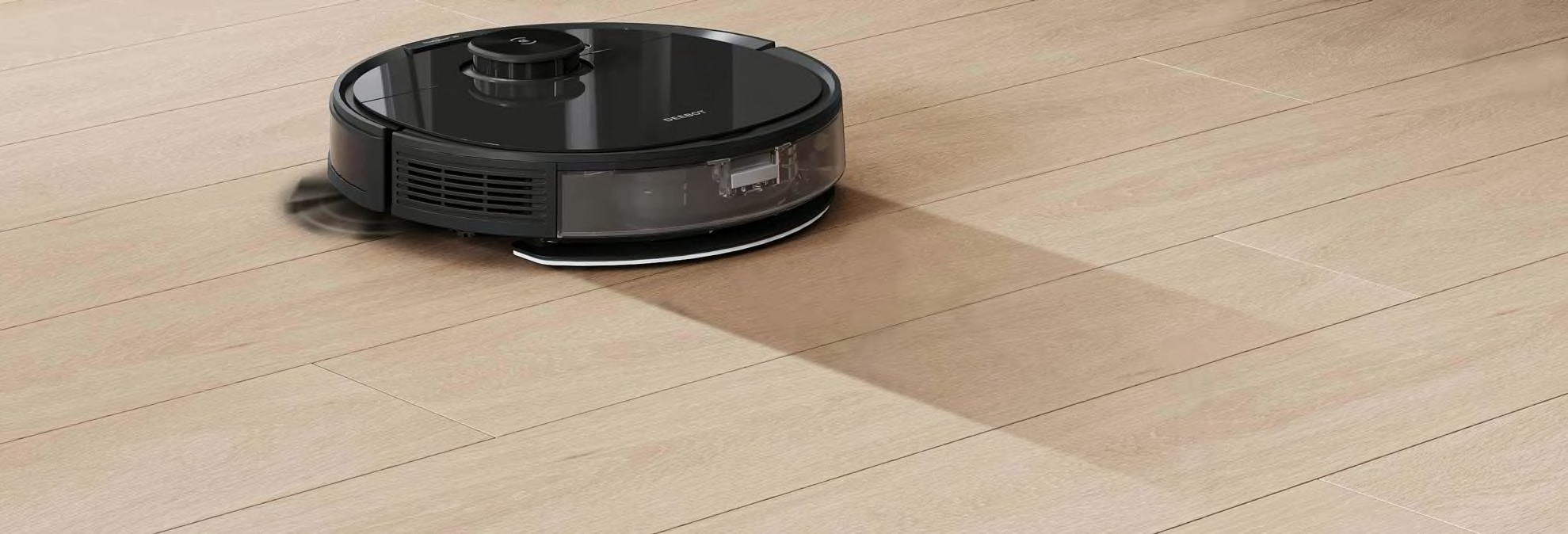
How to Choose a Robotic Mop

Folks have been searching for cleaning shortcuts for as long as there have been homes to clean, which is to say, forever. So every time something comes along that promises to get the job done with less effort, it piques our interest. The most recent examples are robotic mops, or “robomops” as they’re often called. Like their older sibling, the robotic vacuum, these little machines scoot across your floors to clean everything in their path. But robotic mops add moisture to the mix.
While robotic mops may seem like a novelty item, some come at a very serious price. The robotic vacuums that Consumer Reports tests cost from $200 to $2,000.
Types of Robotic Mops
There are two types of robotic mops: hybrid and those that only mop. Hybrid models have both mopping and vacuuming capabilities, while mop-only robots do just that and lack a vacuuming function.
While the mop-only versions are self-explanatory, hybrid robotic mops require some explaining. Most of the hybrid models in Consumer Reports’ tests can vacuum and mop in a single session. A few models have separate modules for vacuuming (a dustbin) and mopping (a water tank) that need to be swapped out depending on which function you want to use.
What Type of Floors Can Robotic Mops Clean?
Like traditional wet mops, robotic mops are intended for hard floors such as tile and vinyl. They’re not intended for carpets. If you have a combination of flooring and carpeting and want your robomop to avoid carpeted areas, there are a few things you can do.
Some robotic mops can detect and avoid carpets. Other models lift their mopping modules and stop dispensing water when they hit carpets. But that doesn’t always work on deep-pile carpets because the mops don’t lift the modules high enough to avoid getting stuck. Another type requires you to set no-go or no-mop zones for carpeted areas using the mop’s app. Other models require you to set up an actual physical barrier to prevent the cleaner from moving into carpeted areas.
And what about hardwood floors? While some manufacturers say it’s safe to use a robotic mop if your hardwood floors are covered with a protective layer of sealant, it’s best to exercise caution. The National Wood Flooring Association warns against using wet mops on wood floors because the moisture might damage the finish and wood over time. When we tested robotic mops, we noticed models often leave behind some residual moisture, which could seep into your wooden floors if they aren’t properly sealed. If you’re uncertain about whether it’s safe to use a robotic mop on your floors, check with your flooring manufacturer to see its recommendations.
How to Pick a Robotic Mop
Most robotic mops feature WiFi connectivity, and like robotic vacuums, they can navigate your space and learn the floor plans of your rooms, creating a map as they go. “That way, you can direct the robot to, for example, mop the kitchen floor,” says Joan Muratore, the project leader who oversaw our robomop testing.
Robotic mops come with remote controls, and connected models can be operated using an app on your smartphone. You can also run them the old-fashioned way, using buttons on the unit itself or on the base of the docking station. With some mops, you can schedule your cleaning sessions and set your cleaning patterns.
As for the mop part, robotic mops use reusable, washable, or single-use disposable mop pads (which you have to replenish). Some also include dry dust mops in both reusable and disposable forms, so the robot can dust your dry floors as well. The mop heads work by spinning, vibrating, or just passing over the floor, similar to an actual mop. Our testers found that spinning heads do a better job.
Some robotic mops use plain water, while others use a cleaning solution to clean your floors. Detergent solutions are sold either as full-strength solutions, as concentrates that are added to water, or as detergent sheets you dissolve in water. Check your mop manufacturer to see the solutions it recommends. You can control how much liquid the mop applies to the floor, so if the floor is especially dirty, you can apply a bit more.
Some higher-end robotic mops have reservoir tanks in their docking stations, where the robomop returns from time to time to empty the dirty water and refill with clean water. Not all robomops have this feature. For those, you have to manually dump the dirty water and refill it with clean water.
Why Trust CR About Robotic Mops?
We test robotic mops for cleaning ability and navigation. We also note the run time for each model, the pattern it traverses on the floor, and clearance, meaning the vertical space it needs to get under furniture. All of this information can be found in our full robotic mop ratings and recommendations.
To test cleaning (mopping) ability, our technicians apply a few spots of tough stains, including V8 Vegetable Juice and espresso coffee, to ceramic tile and vinyl plank flooring. We then send each model on three runs to clean the entire floor and let them go until the run is complete. The time it takes can vary among models. “We used a medium water level and typically a full-room clean or whatever mode we thought was most appropriate,” Muratore says. “If a chosen mode wasn’t that effective at covering the whole area, we’d start over and try another setting.”
Robotic mops navigate in different ways. Most follow a grid pattern, first going around the perimeter of a room, then crisscrossing it in two directions. Others follow programmed patterns and are equipped with obstacle sensors.
To test navigation, we assess the robotic mop’s ability to avoid carpet and obstacles, maneuver past carpet fringe or tassels, pass over electrical cords, and move beneath furniture. If the mop can’t be programmed to avoid carpet, we set up a physical barrier. For the connected models, we use the app. For the nonconnected, we use the remote control.
The run times for the robotic mops in our tests ranged from 50 to 100 minutes. The height clearance ranged from 3 to 5.25 inches. When purchasing a robotic mop, make sure that it offers enough clearance to pass underneath the furniture in your home.
Should I Be Concerned About Privacy?
As with any smart device, robotic mops that connect to the internet raise some privacy concerns. We asked our Digital Lab to take a look, and David DellaRocca, a project leader for data privacy and security, said that manufacturers collect and share data in different ways and have varying degrees of privacy controls available.
Because many of these controls are not on by default, it’s up to you to navigate through the device’s app and set the degree of privacy you feel comfortable with. Many manufacturers allow you to delete data not necessary for the mop’s operation. You should be aware that any additional devices you use to interact with the robotic mop, such as a mobile phone or smart speaker, may have additional privacy and security implications.
























